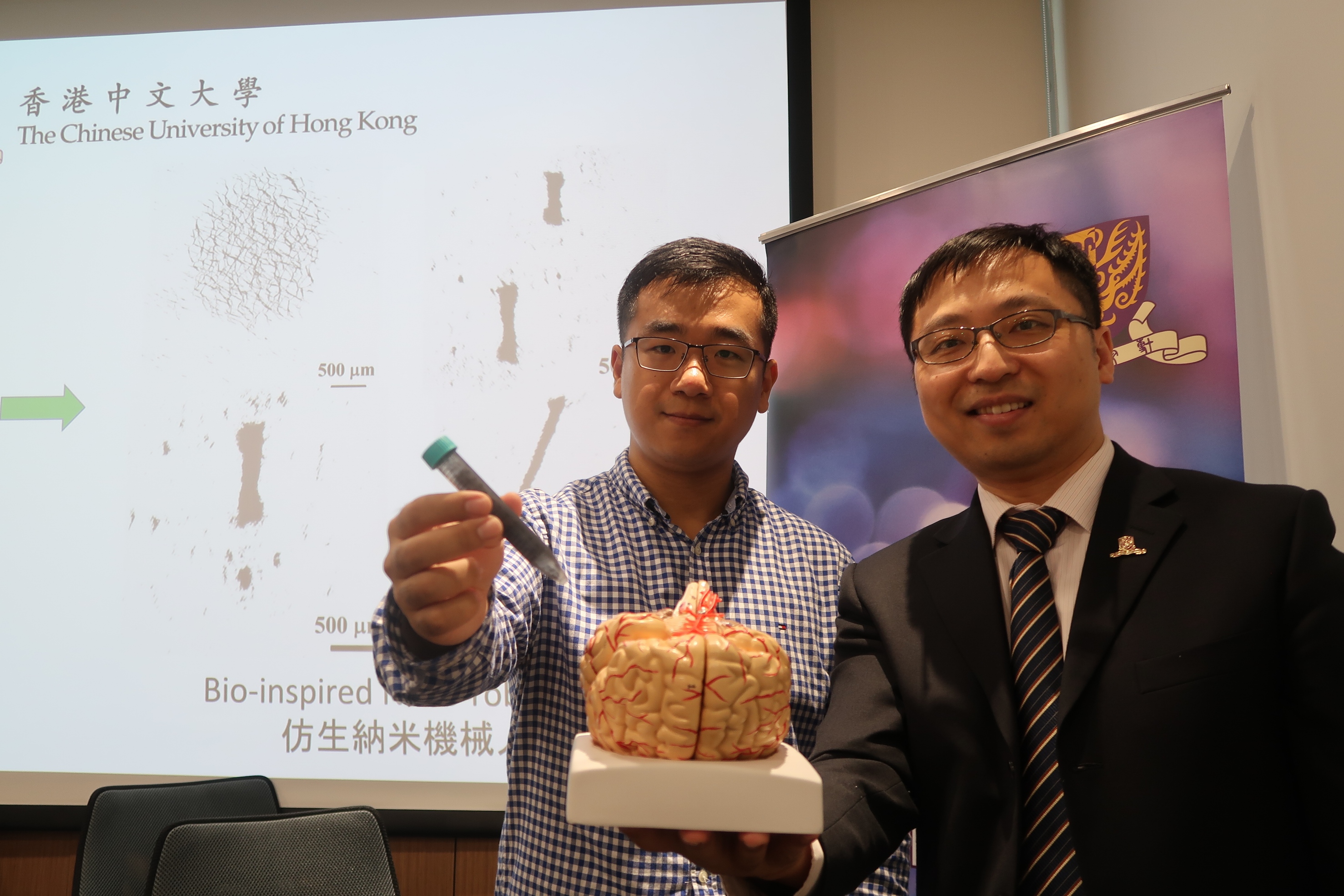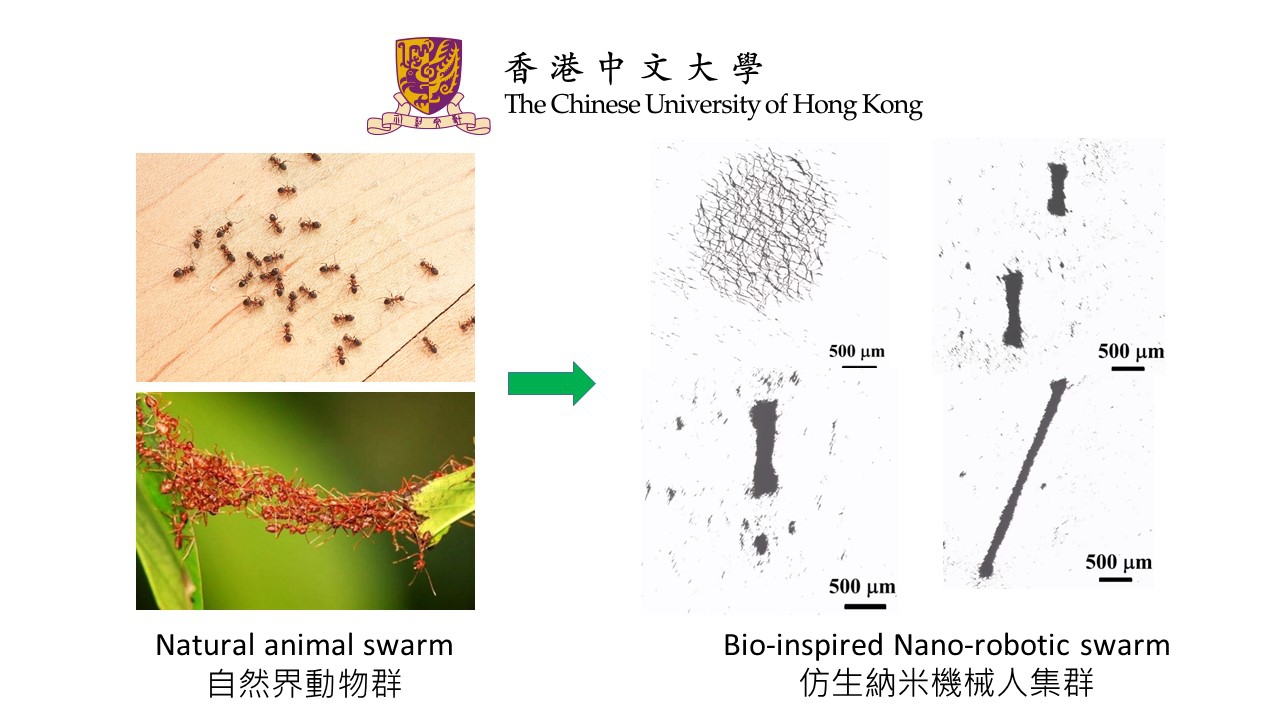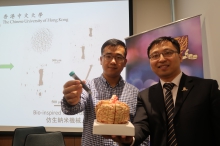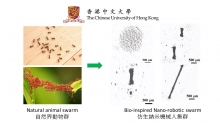CUHK
News Centre
CUHK Engineers: Nano-robots Swarm Learn Collective Morphological Transformation on Animals with Huge Potential for Biomedical Applications
A new way to control the collective movement of nano-robots has been developed by a research team led by Prof. Li ZHANG, Associate Professor of the Department of Mechanical and Automation Engineering at The Chinese University of Hong Kong (CUHK). The team has studied and implemented swarm behaviors on nano-robots, allowing controlled morphological changes and splitting. A high potential for in-vivo biomedical applications, such as targeted drug delivery, is envisioned for these kinds of reconfigurable microswarm with environmental adaptability. The finding has been published in Nature Communications, a prestigious international scientific journal.
Swarm behaviors large and small such as bird flocks, fish schools and bacteria colonies are common in nature. Through communication, these elements can dramatically change the swarming shapes according to the environments they interact with. For example, a swarm of ants can create structures such as chains using only their interconnected bodies as building blocks, in order to traverse difficult terrain. Inspired by natural swarming behavior, researchers are fascinated in developing robot swarms in which modular units can cooperate with each other to accomplish tasks that cannot or can hardly be done by individual agents.
Prof. ZHANG’s team has created an artificial microswarm via the dynamic self-assembly process of millions of magnetic nanoparticles, instead of monolithic structures. Through tuning the applied magnetic field, the ribbon-like pattern of the microrobotic swarm is capable of performing diverse and reversible morphological changes, including extension and shrinkage in an anisotropic manner, and controlled splitting and merging between a single swarm and multiple sub-swarms in a reversible manner.
Prof. ZHANG remarked, “This new microswarm provides a promising solution for industrial applications such as microfabrication and micromanipulation. It also has a high potential application for in-vivo targeted drug delivery. Nano-robots swarm can be programmed to help surgeons to do complex tasks such as passing through tiny spaces in human body. We are now working together with collaborators from the medical school at CUHK to explore and understand the potential for using nano-robots and the micro-robotic platform for clinical applications.”
This research is funded by the Hong Kong Research Grants Council (RGC), the Innovation and Technology Commission (ITC), and the CUHK T Stone Robotics Institute (CURI). Prof. ZHANG’s main research interests include nano-robotics and their biomedical applications. Various researches done by Prof. ZHANG and his group have been published in top-tier journals in robotics and materials science, such as Science Robotics, Nature Communications, International Journal of Robotics Research, IEEE Transactions on Robotics, Soft Robotics, Advanced Functional Materials, and Sensors & Actuators B.
Through tuning the applied magnetic field, Prof. Li ZHANG (right) and his PhD student Jeff YU (left) have created an artificial microswarm via the dynamic self-assembly process of millions of magnetic nanoparticles. This microswarm is capable of performing diverse and reversible morphological changes with environmental adaptability. The team are working together with the Faculty of Medicine at CUHK to conduct animals test and explore the potential clinical applications.





